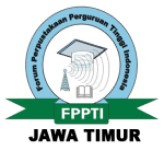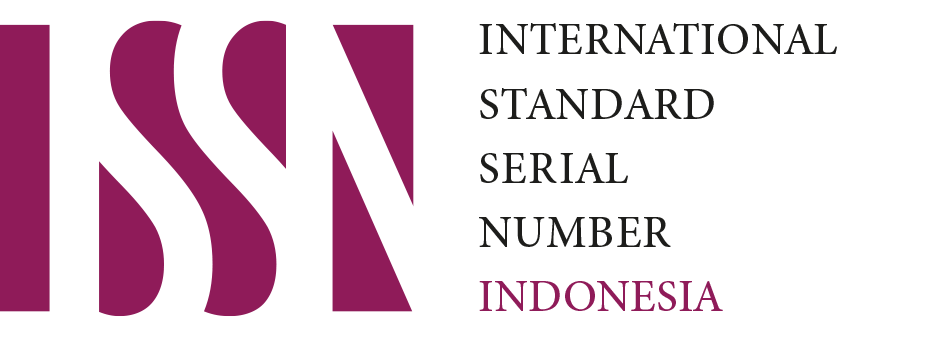Evaluation of ULISYS Acceptance in UNTAG Surabaya Library
Downloads
Background of the study: The functionality of the library information system needs to be improved for users be able to receive the system. Evaluation of user acceptance is one of the benchmarks for the successful implementation of library information systems.
Purpose: This study aims to describe the response of acceptance from users to the UNTAG Library Information System (ULISYS).
Method: This research used qualitative methods using interviews with 6 main informants according to criteria, observations at the UNTAG Surabaya Library, and documentation. Data validity and accuracy tests using source triangulation techniques. Data analysis techniques use the Miles and Huberman concept.
Findings: The use of ULISYS which is considered easy is proven to be able to increase labor productivity from the Education Staff of UNTAG Surabaya Library. The positive attitude of users to use ULISYS is said to be the acceptance phase towards ULISYS. The desire of the Education Staff of UNTAG Surabaya Library to keep using existing information systems can affect the intensity of ULISYS use.
Conclusion: ULISYS can be accepted by the Education Staff of UNTAG Surabaya Library with 4 factors that support the acceptance including ease of use factors, usefulness factors, attitudes towards using of information systems, and behavioral intention to use information systems.
Downloads
Badan Perpustakaan UNTAG Surabaya. (2021).
Davis, F. D. (1989). Perceived Usefulness, Perceived Ease of Use, and User Acceptance of Information Technology. MIS Quarterly, 13(3), 319-340.
Fatmawati, E. (2015). Technology Acceptance Model (TAM) Untuk Menganalisis Penerimaan Terhadap Sistem Informasi Perpustakaan. Jurnal Iqra', 09(01), 1-13.
Firman, A., Wowor, H. F., & Najoan, X. (2016). Sistem Informasi Perpustakaan Online Berbasis Web. E-journal Teknik Elektro dan Komputer, 5(2), 29-36.
Habib, M. P., & Prasetyawan, Y. Y. (2016). Analisis Pemanfaatan Aplikasi UMSLibrary Berbasis Android di Perpustakaan Universitas Muhammadiyah Surakarta. Jurnal Ilmu Perpustakaan, 5(2), 251-260.
Hariyadi, R. R. (2017). Penerapan Teknologi Informasi Digital Library UR Dengan Menggunakan Technology Acceptance Model di FISIP Universitas Riau. JOM FISIP, 4(2), 1-17.
Helaluddin, & Wijaya, H. (2019). Analisis Data Kualitatif : Sebuah Tinjauan Teori & Praktik. Makassar: Sekolah Tinggi Theologia Jaffray.
Maryono. (2017). Aplikasi Software dan Otomasi Perpustakaan. Retrieved Maret 27, 2021, from https://masyono.staff.ugm.ac.id/files/2017/10/APLIKASI-SOFTWARE-DAN-OTOMASI-1.pdf
Noviana, R., & Dewi, A. O. (2016). Dampak Perubahan Sistem Otomasi Limas ke Inlis Lite Bagi Kinerja Pustakawan di Kantor Perpustakaan dan Arsip Daerah Kabupaten Semarang. Jurnal Ilmu Perpustakaan, 5(2), 151-160.
Nugrahani, F. (2014). Metode Penelitian Kualitatif Dalam Bidang Pendidikan Bahasa. Solo: Cakra Books.
Pahlevi, F., & Dewi, A. O. (2019, April). Analisis Aplikasi iJateng Menggunakan Teori Technology Acceptance Model (TAM). Jurnal Ilmu Perpustakaan, 8(2), 103-111.
Purnomo, D. (2017). Model Prototyping Pada Pengembangan Sistem Informasi. JIMP : Jurnal Informatika Merdeka Pasuruan, 2(2), 54-61.
Sadiyah, L., & Adli, M. F. (2019, Desember). Perpustakaan Di Era Teknologi Informasi. Al Maktabah, 4(2), 142-149.
Sandi, A., A. S., Soedijono, B., & Nasiri, A. (2021). Pengaruh Kegunaan dan Kemudahan Terhadap Sikap Penggunaan Dengan Metode TAM Pada Sistem Informasi Magang. IT Journal Research and Development (ITJRD), 5(2), 109-117.
Simanungkalit, J. H. (2010). Konsep Dasar Sistem Informasi. Universitas Terbuka.
Sugiyono. (2016). Metode Penelitian Kuantitatif, Kualitatif, Dan R&D. Bandung: Alfabeta.
Copyright (c) 2022 Imas Rahmadhtul Hidayah, Yanuastrid Shintawati, Dian Kristyanto

This work is licensed under a Creative Commons Attribution-ShareAlike 4.0 International License.
Record and Library Journal by Unair is licensed under a Creative Commons Attribution-ShareAlike 4.0 International License.
1. The journal allows the author to hold the copyright of the article without restrictions.
2. The journal allows the author(s) to retain publishing rights without restrictions
3. The legal formal aspect of journal publication accessibility refers to Creative Commons Attribution Share-Alike (CC BY-SA).
4. The Creative Commons Attribution Share-Alike (CC BY-SA) license allows re-distribution and re-use of a licensed work on the conditions that the creator is appropriately credited and that any derivative work is made available under "the same, similar or a compatible license”. Other than the conditions mentioned above, the editorial board is not responsible for copyright violation.


 57201398420
57201398420

























